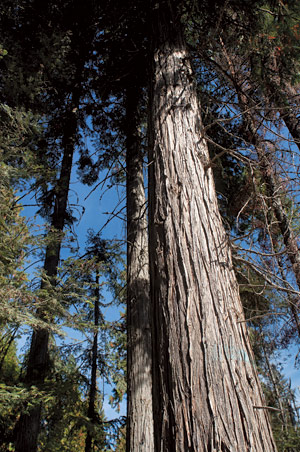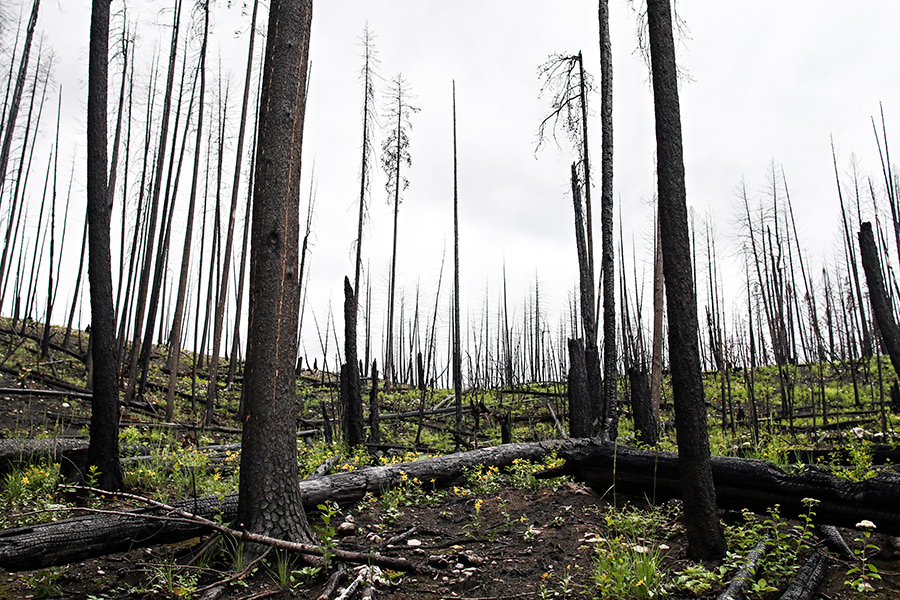It’s a common sight throughout logged forests everywhere — leftover piles of wood debris littered across the landscape. For more than a century this throwaway slash has been an inconvenient and expensive byproduct of harvesting timber as well as a contributor to wildfires. But recent innovations in science are changing the way excess wood debris is valued.
“This is basically a gold pile that nobody is utilizing right now,” said Peter F. Kolb, an associate professor of forest ecology and management at Montana State University.
Nowhere else in the West is there a larger pile of “gold” than Northwest Montana.
A broad collective of scientists and professors like Kolb from regional universities and private industry is conducting a first-of-its-kind research project centered on creating a new biofuel industry for waste wood that could breathe life into the existing timber industry. The Northwest Advanced Renewables Alliance (NARA), encompassing more than 150 people, is exploring the scientific, economic and environmental realities of developing an industry built around turning excess wood debris into jet fuel.
In the new age of biomass research and technology, science has shown slash can be made into biofuel powerful enough for jet airplanes. As oil prices continue to fluctuate, researchers believe the timing is right for an alternative fuel source in the U.S. The market demand certainly exists; the four-state region of Washington, Oregon, Idaho and Montana burns through three-quarters of a billion gallons of jet fuel every year, according to NARA.
NARA’s five-year, $40 million project, funded by the U.S. Department of Agriculture, began in August 2011. NARA administrators presented a one-year review in Missoula on Sept. 13-14. The project remains in the early stages and few definite answers have emerged, but one aspect seems cemented in certainty. Northwest Montana, specifically the Flathead Valley and Libby, has been identified as the best possible inception point for an upstart biofuel industry that could “complement” the existing timber industry.
“The Flathead Valley has a good combination of high amounts of biomass nearby and a good enough transportation network,” NARA Co-Director Mike Wolcott told the Beacon.
Feasibility, of course, is the key aspect of making this biofuel industry a reality. Researchers surveyed the Northern Rockies looking for places with existing infrastructure suitable to logging, like roads and sawmills, in close proximity to bountiful slash assets.
Initially, Kalispell, Columbia Falls and Whitefish have been ranked highest because of existing railroad, logging roads and sawmills near forested land, Wolcott said. Libby ranked high because of biomass availability but has less infrastructure than the Flathead Valley. Missoula was also tabbed as another strong suitor.
“This would be really good because we would have another market for byproducts and it would help us manage the forests more. We just don’t have a lot of outlets for that waste wood right now,” said Chuck Roady, vice president at F.H. Stoltze Land and Lumber Company in Columbia Falls.
“I want it to succeed but it needs to be able to pay for itself. Nothing subsidized by the government can last long term. It needs to cover itself.”
What would this new industry look like? In many ways it would look similar to the traditional timber industry, but with modern science incorporated. Wolcott said research has identified two types of possible facilities that could exist in Northwest Montana. One facility would be a conversion site where chemical and mechanical pretreatment of wood debris would occur. He compared this larger facility to the former Smurfit-Stone site outside Missoula.
A second facility, being called a “depot,” could be developed at existing or former sawmills and would be the first stop for debris collected in the forest and prepared for pretreatment. After being pretreated at the conversion sites, the products would continue up the supply chain to one of the two fuel refineries in the state, either in Great Falls or Billings.
“There are a number of assets (in Northwest Montana).” Wolcott said. “We’re here to really understand what kind of shape are these assets in; how available would they be and how suitable would they be for a new biomass industry?”
NARA is studying every characteristic of an area where an industry could be founded, from the political and social climate to the availability and skill of the possible workforce. There are also environmental questions, like how much excess wood debris should be left behind in the forest for regrowth and regeneration?
 |
|
photo by Lido Vizzutti | Flathead Beacon |
“We have a large team of folks assessing every aspect of sustainability and feasibility,” Wolcott said, adding, “We have to make sure these systems we move forward with provide environmental and ecological benefit to the forests.”
An obvious aspect is the availability of the product, and Montana appears to have no shortage of biofuel.
“Montana is unique compared to anywhere else in the world. We have this vast resource of which a tiny fraction is being utilized,” Kolb said last summer at a two-day event with regional stakeholders and those interested in NARA’s project. “And I’m not talking about going and logging wilderness areas or anything like. In the existing forests that are under management, it gets logged and a lot of it is not utilized.”
Slash piles from logging sites are typically burned afterward.
Other biofuels exist in areas where fire suppression has improved over the last century and left large sections of forest overgrown, Kolb said.
“We have vast amounts of biomass, better known as fuel, where nothing else will happen except it will support some very severe fires,” he said.
Also there are five million acres of dead tree stands from pine beetle across the state that could be utilized.
Challenges certainly exist. For one, the scientific process of turning debris into jet fuel has not been exacted. Certain aspects of the process remain slow, perhaps too slow for its viability on a large production scale. There’s also the concern that costs could override benefits, which is why finding places like Northwest Montana, where depots and conversion sites could be developed near forests and reduce transportation costs, is integral.
The USDA has identified NARA’s project as “high risk, high reward,” Wolcott said. But private airlines like United and Alaska Air and the U.S. Department of Defense have emerged showing strong support.
“We are cognizant that this is a big challenge and we are respecting those challenges,” Wolcott said.
“But if we didn’t think we had a shot at this we wouldn’t be pouring our efforts at this like we are. We have a very strong team and good partnerships to head up these problems. I think we have a decent chance, but it’s not going to be easy.”
For more information about NARA, visit www.nararenewables.org.
